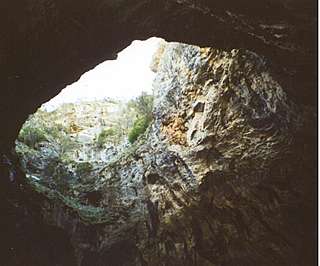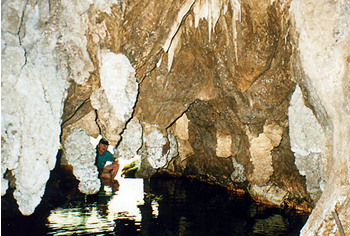Limestone
Caves
7b. Management: caves
The NPWS has a dilemma in that it must protect the caves
but at the same time allowing public access to this extremely fragile
ecosystem. The NSW National Parks and Wildlife Service manages caves at
Yarrangobilly according to the following categories.
- 1. Public Access: Open to the public with a ranger or self-guided.
- 2.1 Special Purpose: Two caves have been set aside at Yarrangobilly as scientific reference caves to protect their faunal communities. Access to these will be by scientific researches holding NPWS Scientific Consents.
- 2.2. Outstanding Natural Value: caves with special formations or ecosystems.
- 2.3 Dangerous: caves may be subject to flooding or have dangerous drops.
- 3.1 Wild Caves: there are about 120 wild caves at Yarrangobilly which require permits from the NPWS to enter.
- 3.2 Unclassified Caves: closed until classified.
Specific cave management practices at Yarrangobilly include:
- limiting tourist access to only a few caves;restricting public use to guided tours except for one self-guided cave;
- educating the public on cave fragility;
- only accredited caving groups, normally members of the Australian Speleological Federation, will be permitted to go caving other than at public access caves and only then with written permission;
- all groups holding permits must abide by the Codes of Ethics, Safety and Minimal Impact of the Australian Speleological Federation;
- the use of caves for toileting, smoking or carbide lamps is forbidden;
- cavers should follow a single pathway through caves to minimise human impact;
- muddy shoes and clothing must be removed in delicate areas to leave the passage mud free;
- camping or lighting fires near cave entrances is not permitted;
- the maximum number of cavers on any one trip is 12 and the minimum 3. Not more than one third can be inexperienced;
- each trip is to be undertaken by a fully experienced leader who is responsible for safety and conduct of the group.
Members
of this group are allowed access into some non-public access caves after
written permission.